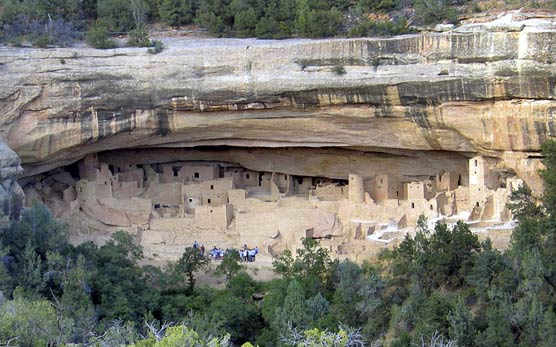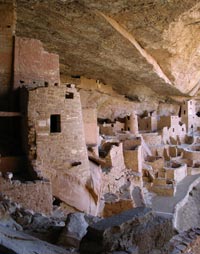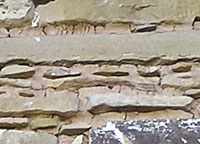Mesa Verde National Park - National Park Service
Cliff Palace
|
On the Cliff Palace/Balcony House Road (map), Ranger-Guided Only, Fee Required

Cliff Palace
NPS PHOTO

Open 8:00 a.m. to sunset, the Cliff Palace Loop Road takes you
past Cliff Palace, Balcony House, and overlooks to other cliff
dwellings. You may enter Balcony House or Cliff Palace by ranger-guided
tour only. Purchase tickets for these one-hour tours at the Mesa Verde
Visitor and Research Center before driving to the sites.
Recent studies reveal that Cliff Palace contained 150 rooms and 23 kivas and had a population of approximately 100 people. Out of the nearly 600 cliff dwellings concentrated within the boundaries of the park, 75% contain only 1-5 rooms each, and many are single room storage units. If you visit Cliff Palace you will enter an exceptionally large dwelling which may have had special significance to the original occupants. It is thought that Cliff Palace was a social, administrative site with high ceremonial usage. 
Cliff Palace doorways
NPS PHOTO

Example of chinking
NPS PHOTO
|
Did You Know?
 A subterranean kiva remained 50 degrees Fahrenheit all year round.
So for the Ancestral Puebloans, it stayed cool in the summer, and only a
small fire was needed to keep it warm in the winter.
A subterranean kiva remained 50 degrees Fahrenheit all year round.
So for the Ancestral Puebloans, it stayed cool in the summer, and only a
small fire was needed to keep it warm in the winter.
沒有留言:
張貼留言